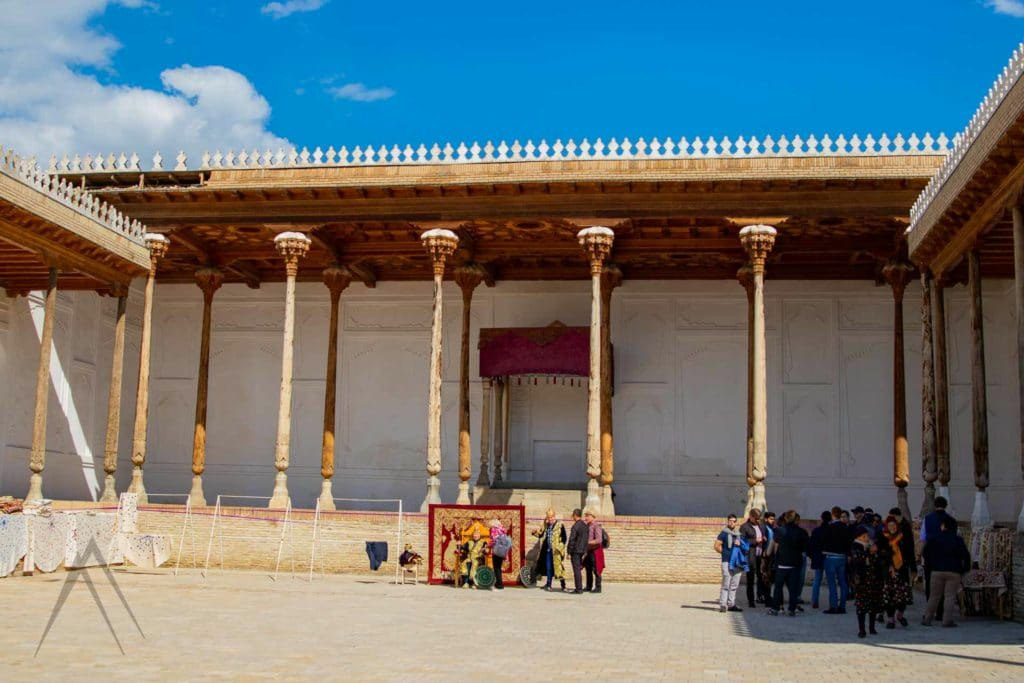HI EVERYONE !!!
TODAY I AM GOING TO SHARE MORE INFORMATION ABOUT ARK CITADEL FOR YOU😻
LETS STARTTTTT😍
The Ark is built on the remains of earlier structures, which constitute a layer twenty meters deep under the base arch, the layers indicating that previous fortresses had been built and destroyed on the site.
The first known reference to the Ark is contained in the "History of Bukhara" by Narshakhi (899 - 960). Abubakr wrote "Bindu, the ruler of Bukhara, built this fortress, but it soon was destroyed. Many times it was constructed, many times destroyed." Abubakr says that when the last ruler to rebuild asked counsel of his wise men, they advised him to construct the fortress around seven points, located in the same relation to each other as the stars of the constellation Ursa Major. Thus built, the fortress was never again destroyed.[7]
The age of the Ark has not been established accurately, but by 500 CE it was already the residence of local rulers. Here, in the fastness of the citadel, lived the emirs, their chief viziers, military leaders, and numerous servants.
When the soldiers of Genghis Khan took Bukhara, the inhabitants of the city found refuge in the Ark, but the conquerors smashed the defenders and ransacked the fortress.
In the Middle Ages the fortress was worked on by Rudaki, Ferdowsi, Avicenna, Farabi, and later Omar Khayyám. Here also was kept a great library, of which Avicenna wrote:
I found in this library such books, about which I had not known and which I had never before seen in my life. I read them, and I came to know each scientist and each science. Before me lay gates of inspiration into great depths of knowledge which I had not surmised to exist.[citation needed]
Most probably, the library was destroyed following one of the conquests of Bukhara.
During the Russian Civil War, the Ark was greatly damaged by Red Army troops under the command of Mikhail Frunze during the 1920 Battle of Bukhara. Frunze ordered the Ark bombed by aircraft, which left a large part of the structure in ruins.[citation needed] There is also reason to believe that the last Emir, Mohammed Alim Khan (1880–1944), who escaped to Afghanistan with the royal treasury, ordered the Ark to be blown up so that its sacred places (especially the harem) could not be desecrated by the Bolsheviks.
In legend, the creator of the Ark was the epic hero Siyavush. As a youth, he hid in the rich oasis country of Turan from his stepmother. Siyavush and the daughter of the local ruler of Afrasiyab fell in love. The girl's father agreed to permit them to marry provided that Siyavush would first build a palace in the area bounded by a bull skin, obviously intended as an impossible task. But Siyavush cut the bull skin into slender strips, connected the ends, and inside this boundary built the palace. (This is essentially the classical legend of Dido and the founding of Carthage in North Africa, as recorded in antiquity.)







Комментарии
Отправить комментарий